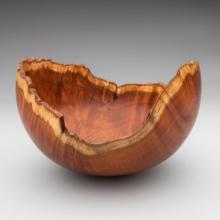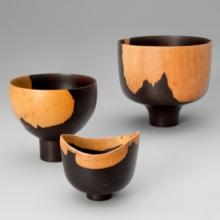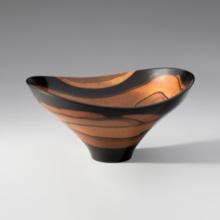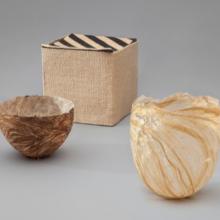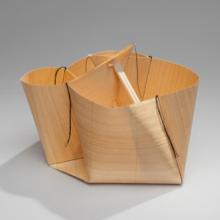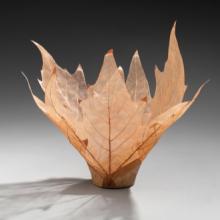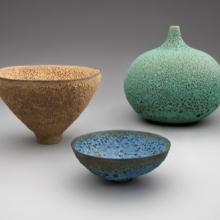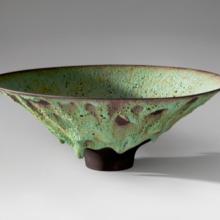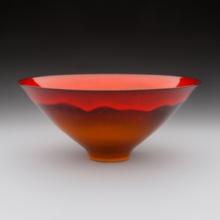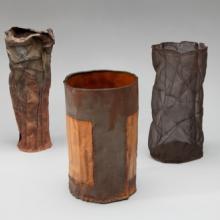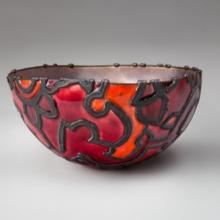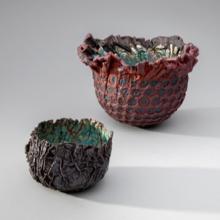Turn, Weave, Fire, and Fold: Vessels from the Forrest L. Merrill Collection
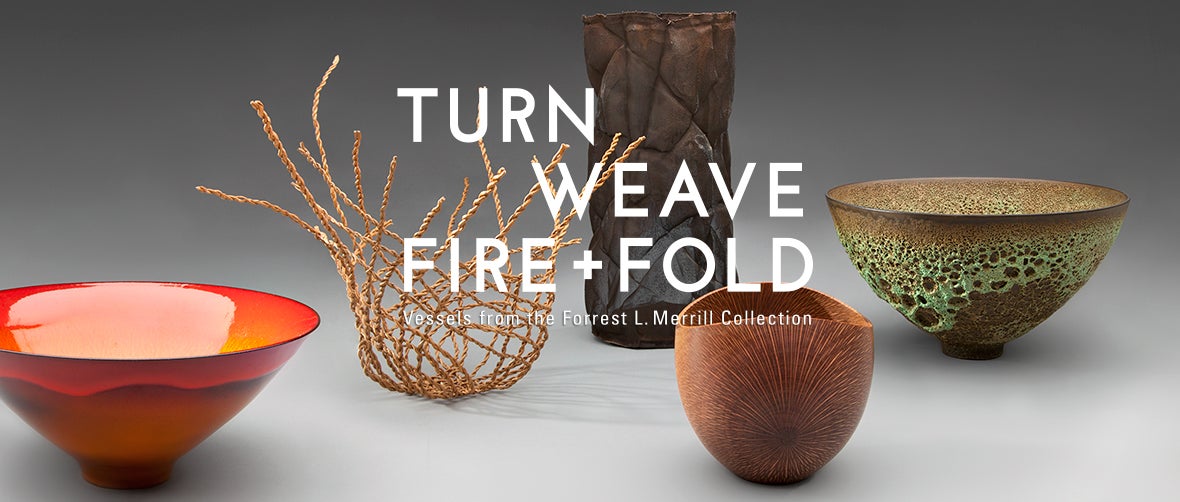
International Terminal
Turn, Weave, Fire, and Fold: Vessels from the Forrest L. Merrill Collection
“You can put your heart in (vessels). The fact that they’re not utilitarian doesn’t mean they aren’t useful, to the eye or to the heart.”
—Forrest Merrill, “Collecting California”, American Craft magazine, June-July, 2006
Collector Forrest Merrill has an affection for the vessel. Its form, sometimes alluding to the sensuous curves of a human body, holds irresistible appeal for him. So too does its familiar scale, which allows a vessel to be cradled in the palms of one’s hands. Forrest’s first art acquisition was in 1950 at a clay and glass exhibition in Pasadena, California, that he attended with his high school art club. With forty dollars earned from cutting neighbors’ lawns the previous summer, Forrest purchased a slumped-glass salad set by Glen Lukens, a pioneer in studio crafts then teaching at U.S.C. in Los Angeles. Forrest’s newly discovered passion for the vessel led to his collecting Scandinavian ceramics while attending the University of Stockholm in Sweden. After settling in Northern California, he became close friends with Bauhaus-trained potter Marguerite Wildenhain, who worked and taught at her studio in the hills above Guerneville, California. It was Wildenhain whom Forrest credits as the influence who encouraged him “to not only look, but to see.”
The San Francisco Bay Area was an exciting place during the 1960s, especially in the world of crafts, with local artists pushing the boundaries in every medium. Forrest took full advantage of their close proximity, and his acquisitions were decidedly personal. It was during this period that Forrest discovered the elegant bowls of wood turner Bob Stocksdale at the Berkeley home-furnishings store Fraser’s. Forrest approached the artist with an offer of wood from trees that he had cut down in his yard, and thereafter acquired a bowl that Bob made from that very wood. This was the beginning of a rich and enduring friendship with both Stocksdale and his wife, fiber artist Kay Sekimachi. Celebrated for her sculptural monofilament hangings and woven room dividers, Sekimachi was exploring vessel forms at the time, which materialized as woven boxes and baskets, and leaf bowls.
In 1974, Forrest met artist June Schwarcz at an exhibition of her enamel vessels at the Anneberg Gallery in San Francisco. An invitation of tea and conversation at June’s Sausalito home and studio led to a close relationship, which they have enjoyed for decades. And it was an invitation to lunch that sparked Forrest’s friendship with potter James Lovera, just prior to Lovera’s retrospective exhibition at the Crocker Art Museum in Sacramento in 2006. Forrest had admired Lovera’s ceramics offered at Gump’s gallery in San Francisco as early as the 1960s, and he has since acquired a number of Lovera’s vessels, more recently collecting the artist’s work in depth.
Forrest Merrill’s collection is one of the largest and most important of its kind in the world. It contains extraordinary examples spanning the careers of countless artists working in the 20th and 21st centuries. Each piece is of inestimable value to Forrest, representing close relationships forged over decades of studio visits and innumerable conversations with the artists; exchanges that allowed the collector to gain insight into their motivations and a more intimate understanding of the works he was acquiring. Bob Stocksdale, Kay Sekimachi, June Schwarcz, and James Lovera have enriched his life. Forrest considers his collection of their art, along with works made by other artists, to be his life’s focus. Each vessel represents a conversation, a gesture, and a special memory, but as Forrest insists, “the artists themselves are the real treasures.”
©2014 by the San Francisco Airport Commission. All rights reserved.
